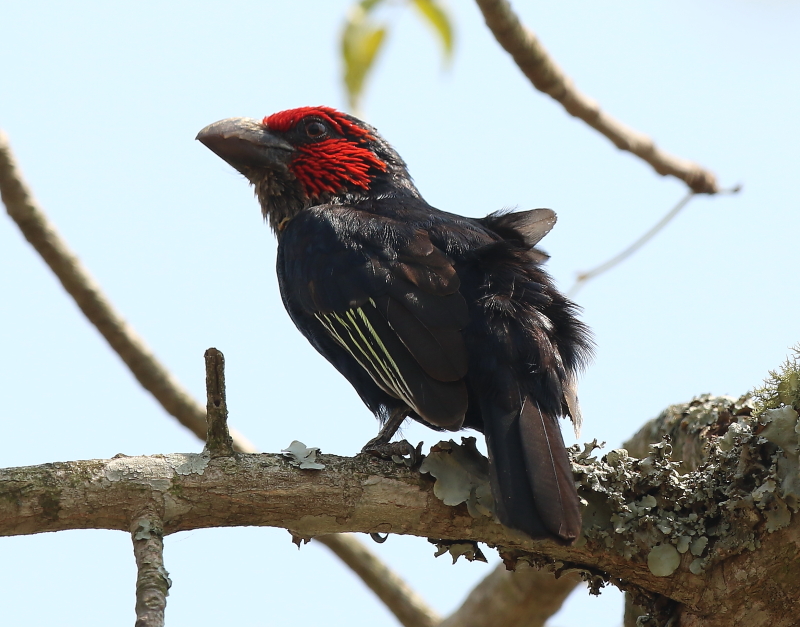
Exploring the Avian Riches of Uganda’s Breathtaking Wilderness
A Birding Safari in Queen Elizabeth National Park. Exploring the Avian Riches of Uganda’s Breathtaking Wilderness. Embark on a Birding safari in Uganda with Pamoja Tours and Travel.
Introduction:
Nestled in the heart of southwestern Uganda, Queen Elizabeth National Park is a birding paradise that beckons birdwatchers and nature enthusiasts from around the globe. Stretching across diverse landscapes, from sprawling savannahs to dense forests and picturesque wetlands, this protected area is a haven for avian species, making it an ideal destination for an unforgettable birding safari.
The park boasts a staggering bird species count of over 600, making it one of the most biodiverse regions in East Africa. From majestic raptors soaring in the sky to colorful songbirds perched in the canopies. Queen Elizabeth National Park also offers a remarkable opportunity to witness a kaleidoscope of avian life.
The Kazinga Channel and Wetland Gems:
One of the highlights of a birding safari in Queen Elizabeth National Park is a visit to the renowned Kazinga Channel. This natural waterway connects Lake Edward and also Lake George, creating a thriving ecosystem that attracts a multitude of bird species. As you embark on a boat excursion along the channel, you’ll be greeted by a symphony of birdcalls and also an abundance of feathered wonders.
The channel is particularly known for its water-associated bird species, including the iconic African fish eagle. With its regal appearance and piercing call, the African fish eagle captures the essence of the African wilderness as it soars above the water, ready to swoop down and also catch its prey. Other captivating waterbirds that can be spotted along the channel include the graceful gray crowned crane, the malachite kingfisher with its vibrant colors, and the African jacana delicately walking on lily pads.
Beyond the Kazinga Channel
Beyond the Kazinga Channel, the wetlands of Queen Elizabeth National Park offer an array of birding opportunities. The Ishasha and Maramagambo swamps, among others, are teeming with avian life. Here, you may spot the elegant pied kingfisher hovering above the water before plunging in for its next meal. Large waterbirds such as the African spoonbill and saddle-billed stork add a touch of grandeur to the wetland landscape, while delicate African jacanas gracefully traverse the floating vegetation.

Diverse Habitats and Avian Delights:
Queen Elizabeth National Park’s avian wonders extend beyond the waterways. Exploring its diverse habitats also unveils a plethora of bird species that have adapted to different environments. The open savannah grasslands are home to magnificent raptors, including the martial eagle, African hawk-eagle, and also bateleur eagle. These majestic birds of prey dominate the skies, showcasing their aerial prowess and commanding presence.
As you venture into the park’s woodlands, a symphony of bird songs fills the air. Colorful barbets, such as the red-faced and yellow-billed barbets, announce their presence with their distinct calls. Hoopoes with their distinctive crests can be spotted perched on branches, while sunbirds flit from flower to flower. Also, their iridescent plumage shimmering in the sunlight.
The forests of Queen Elizabeth National Park harbor their own avian treasures. A hike through these lush habitats may lead you to encounter the African green broadbill, a small bird with stunning emerald plumage and a unique call. The melodious songs of various cuckoo species resonate through the canopies, adding a touch of enchantment to the birding experience. If you’re lucky, you may even catch a glimpse of the elusive African paradise flycatcher, with its vibrant red and black plumage.
Migratory Species and Conservation:
Queen Elizabeth National Park serves as a vital stopover and wintering site for numerous migratory bird species. These winged travelers journey thousands of kilometers, escaping harsh winters in their breeding grounds to find refuge in the park’s favorable climate. The wetlands, in particular, provide essential habitats for these migrants, making Queen Elizabeth National Park a crucial sanctuary for their survival.
Birdwatchers have the opportunity to witness the incredible spectacle of flocks of migratory birds, such as the black-winged stilt, whiskered tern, and also lesser flamingo, taking to the skies in synchronized flight. These also awe-inspiring displays highlight the importance of preserving these fragile ecosystems and safeguarding the migratory routes that connect continents.
Conservation efforts in Queen Elizabeth National Park are crucial for protecting its avian treasures. Authorities and also conservation organizations work hand in hand to promote sustainable tourism practices and engage local communities in conservation initiatives. By supporting responsible birdwatching and participating in ecotourism activities, visitors contribute to the preservation of the park’s remarkable birdlife and the conservation of its habitats.
Conclusion:
A birding safari in Queen Elizabeth National Park is an immersive journey into the heart of East Africa’s avian wonders. From the captivating Kazinga Channel and also its water-associated species to the diverse habitats of the savannahs, woodlands, forests, and wetlands, the park offers an unparalleled opportunity to witness the incredible biodiversity of birds.
As birdwatchers explore this breathtaking wilderness, they develop a profound appreciation for the delicate balance of nature and the need to protect these fragile ecosystems. Queen Elizabeth National Park stands as a testament to the beauty and richness of our natural world, and through responsible birding practices and conservation efforts, we can ensure that future generations will continue to marvel at the winged inhabitants of this remarkable sanctuary.






